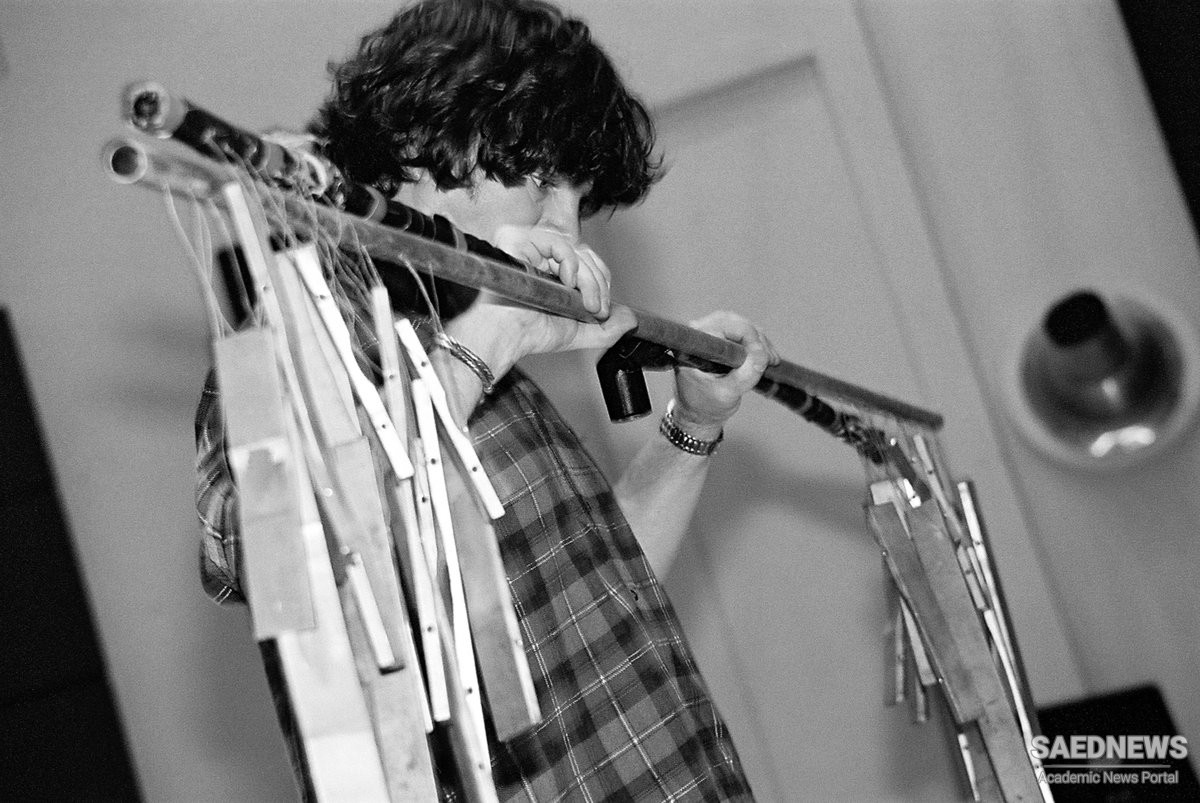Examples of these from the eleventh to thirteenth centuries are preserved in the Franciscan Monastery of the Flagellation in Jerusalem, from the Latin Kingdom Church of the Nativity in Bethlehem. The bells that appear in the medieval manuscripts were usually a simple beehive shape (the traditional round wicker or straw beehive known as a skep, not the modern wooden shape). The earliest surviving European cast bronze bells larger than the Roman handbells are also mostly this shape. These date from around the eighth century AD, and the necessary technology is said to have originated in Campania in Italy (the area around Naples)—thus the origin of our term for bell scholarship: campanology.
Before that date, European bells other than the Roman seem to have been made from folded iron sheets, exactly like the cattle bells still widely used to this day. St. Patrick’s bell, preserved in the National Museum of Ireland in Dublin, was made in this way: an iron sheet forged and folded, rectangular in section, narrower at the top than at the bottom, with the sheet joined at the narrow sides by rivets. Save for its age, it is all but identical in appearance with the bell shown in figure 1.11 from a farm in Iowa. Fivos Anoyanakis describes and illustrates the manufacture of such bells and also the making of cast cattle bells.
Cattle bells serve several purposes. One is for protection, both physical and mystical (see interlude A). The sound of a bell may frighten away a predator such as a wolf or an eagle, and it may also protect the animal from witchcraft and attack by elves and other evil spirits. Another purpose is for location, for the shepherd or cowherd searching for an animal in rough or wooded country will follow the sound of the bell. A third is for leadership, for if the lead animal, a bellwether, for example (the leader is often a female), carries a bell, the rest of the flock will follow. And a fourth is for pleasure and euphony. In Switzerland, among other places, a farmer will choose the bells carefully to make sure that all are in tune with each other and will derive pleasure from the musical combinations of sounds produced by the animals as they graze.
Animal bells are also often used by folk dancers. In some areas, their costumes must be very tiring to wear, for they may carry a dozen or more quite heavy bells stitched to their belts or clothing. Similar bells were also often attached to carriages, sleighs, or horse harnesses, often for much the same reasons that they were attached to sheep and cattle. These sometimes appear in musical scores, for example by Mozart and Mahler. They are also used domestically. Many of us have a doorbell on our house, for instance. In the days when domestic servants were plentiful, a row of bells, often differentiated by pitch, would hang in or near the servants’ hall. When members of the family required a service, they would ring, and the staff would know, either by pitch or by seeing which bell was swinging, the room to which they were summoned.
A summons is one of the commonest purposes for bells: the call to church or to school, or to signal the hours of prayer. An alarm is another, whether for fire or flood or an enemy attack. Another is to tell the time, for in many parts of the world, chimes are used to signal the hours, very commonly with different, easily recognized, musical patterns to denote which quarter-hour it is.


 Development of Musical Discourse in Medieval Netherlands
Development of Musical Discourse in Medieval Netherlands














































